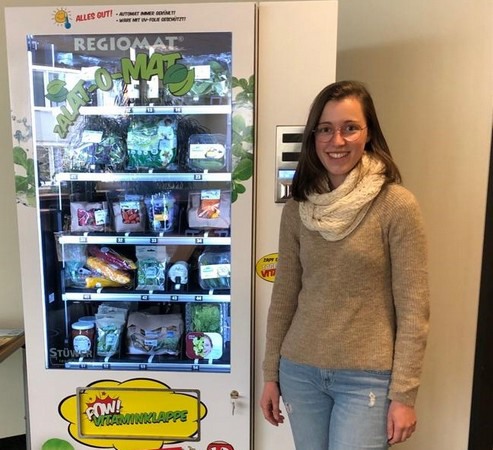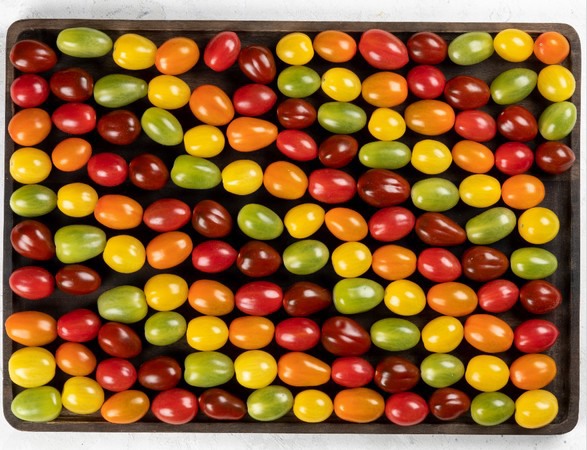Vending machines selling healthy snacks are an increasingly common sight, not only in farm shops but also in hospitals, canteens, and railway stations. In the growing market of snack vegetables, vending machines offer consumers healthy and convenient options round the clock.
Last week during Fruit Logistica, Rijk Zwaan presented a colorful palette of snack vegetables in a vending machine at its Retail Center in Berlin. Color is essential, according to Wim Verhoeven from Vendolution and Lisa Zapf from Zalat-o-mat.

Local produce
Lisa Zapf’s family owns the crop production company called Zapf Fresh Vegetables in the town of Kandel, which is in Germany’s Palatinate region. “The crops we grow include corn salad, rocket, baby leaf, beetroot, tomatoes, and snack peppers. I became responsible for sales in 2016, but I soon realized that the wholesale market wasn’t for me. So I bought my first three vending machines to sell our products locally,” says Zapf.
Easy-to-adjust compartments
She has consistently built on that success and her company called Zalat-o-mat – which she runs together with her partner – now has 13 vending machines allowing customers to purchase fresh, locally grown produce. Through Stüwer, they also sell their vending machines, known as Regiomats, to other growers and provide advice on how to get the best out of them. “It’s easy to adjust the compartments. That’s very important for our seasonal vegetables because they come in various shapes and sizes.”

Fresh and healthy food, 24/7
Vending machines are equally popular in the Netherlands, according to Wim Verhoeven from Vendolution, who is the Dutch representative of Spanish vending machine supplier Jofemar. “Besides selling them to growers, we also supply them to hospitals, company canteens, and ‘on the go’ locations. There’s strong growth in the market for healthy products. Companies want their employees to have access to healthy salads, smoothies, and complete meals, 24 hours a day and seven days a week.”
Reducing labor costs and food waste
Verhoeven explains that the demand for vending machines has surged since the pandemic because they eliminate direct contact. “Moreover, because vending machines are unmanned, they help to reduce labor costs. Thanks to the in-built software and an app, the grower or operator can see exactly what has been sold and when. As a result, the products are always super-fresh.” Zapf adds that the vending machines also help reduce food waste: “The grower or operator can precisely analyze customer needs. This leads to less packaging waste and less food waste.”

Contrasting colors play a key role
The visitors to the Rijk Zwaan Retail Center during Fruit Logistica saw for themselves just how important color is when it comes to stimulating sales of fresh products in vending machines.
Verhoeven: “The vending machine is a miniature shop window. Consumers buy with their eyes. Colorful products make their mouths water. The American company called Farmer’s Fridge capitalizes on that by using vending machines to sell colorful and healthy salads in tubs.” Zapf agrees that color is extremely valuable. “It’s very important to have contrasting colors in the vending machine. There must always be an attractive, colorful, and varied display of vegetables. And our customers appreciate the fact that we always enable them to achieve that, especially in the summer.”
They both expect the demand for vending machines to continue increasing throughout the fresh produce value chain. Verhoeven: “This concept responds to the consumer trend towards healthy eating, and it’s also a good fit with the convenience trend. I’m optimistic about the future.”
For more information: Rijk Zwaan
Rijk Zwaan
[email protected]
www.rijkzwaan.com
